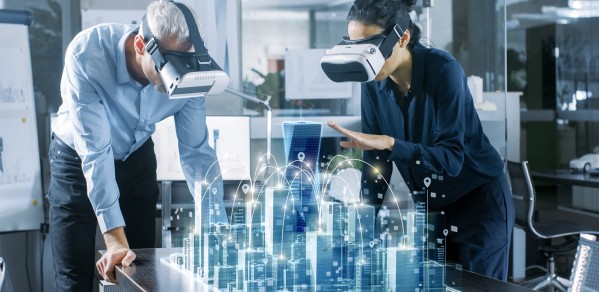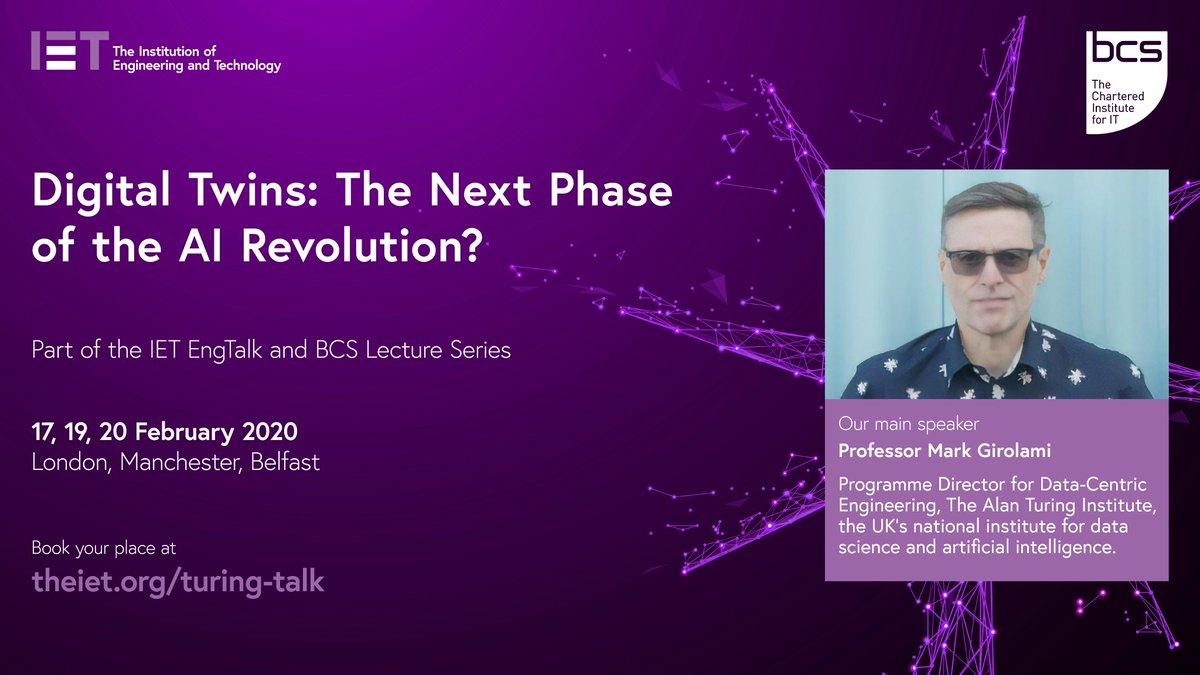
Ahead of his Turing Talk touring lecture series, Professor Mark Girolami, Sir Kirby Laing Professor of Civil Engineering at the University of Cambridge, Royal Academy of Engineering Research Chair, Academic Director of CDBB, and Director of the Lloyd’s Register Foundation Programme on Data Centric Engineering at The Alan Turing Institute, reflects on the history of Digital Twins and their transformative potential for our future lives.
Digital twin – A realistic digital representation of assets, processes or systems, in the built or national environment. The complexity of that representation, and degree of connectedness, varies depending on maturity
The term Digital Twin propels us into the future but the concept – the idea of pairing the physical and the virtual worlds – has been pursued by humankind over many centuries. The notion of being able to predict the behaviour of the world around us has been an essential element for the development of humankind over the millenia. The potential benefits of such foresight has mass appeal, from identifying the best time to plant a crop or set sail on the seas to reach far-flung places to anticipating the challenges of space travel in the race to reach the moon and beyond. Having knowledge to appropriately respond to a set of circumstances brings its rewards. It can be life enhancing.
The desire to better understand and control the world around us is profound and has shaped the development of civilisation since history began. Consider the Antikythera mechanism, an advanced scientific instrument in its day back in 100BC, used by the ancient Greeks to chart the movement of the sun and the moon and predict eclipses and astronomical events with a view to better understanding the relationship between the heavens and the earth. Fast forward to 1876 when Lord Kelvin (Sir William Thomson) constructed a mechanical tide-predicting machine – considered to be an early analogue computer – to calculate the ebb and flow of tides, information essential to marine navigation and critically important during the D-Day Normandy landings of the Second World War. Instruments to observe and measure changes in weather enabled the forecasting essential to societies relying on growing and harvesting crops. But until the advent of more sophisticated computing and measuring technologies, accurately predicting the weather remained hit and miss.

With advancements in computing technology came a seminal moment in the 1960s when human attention was gripped by that final frontier – space. Getting man on the moon and back to earth was made possible by the required technologies being available. These were critical to the exploration of space – a place we could not visit to try things out. We needed some notion of a twin where we could test a number of scenarios – how crafts would fly and if they would withstand the testing environment of space. This mission required a replica so life like the astronauts could use it to train, test themselves and understand what was involved to control a space craft. These basic twins, systems created to mirror systems in space, were key to the rescue mission of Apollo 13 in April 1970; after oxygen tanks exploded engineers were able use the twin models to test possible solutions on the ground.
We have moved from Mechanical Twins (the Antikythera ) to Analogue Twins (Tide Prediction) and with the advent of Digital Computing we can now consider Digital Twins. As digital technology and artificial intelligence becomes increasingly sophisticated we started to think about twinning differently and ask some interesting questions. Could we have a Digital Twin that exhibits some sort of intelligence? Could Digital Twins of cities intelligently respond to a set of circumstances? Perhaps they already do. There are AI-informed machines that can beat the grandmasters of chess, and there is machine-learning software capable of intuiting the human mind in the famously complex game of Go. The desire to have a likeness of ourselves and our environment – an avatar – has long captured the imagination of filmmakers and designers of computer games. Now we have the technical ability to make the imaginary a reality.
We have come a long way, but unlocking the prize Digital Twins bring, the unprecedented opportunity to make better-informed decisions about the things that affect the lives of each and every one of us is still some way off. But it is a prize worth working for.
Imagine a Digital Twin in the context of healthcare. We now know, for example, that asthma is not a single disease but a combination of conditions; we know that cancer comprises a wide range of tumours. Having a personalised Digital Twin – the Digital Patient –to test treatments and simulate different scenarios brings the possibility of personalised and proven medical intervention.
Imagine Digital Twins of smart cities being able to react to the information we gather from sensors to redirect travel routes that avoid pockets of air pollution or close roads to push traffic away from schools. A National Digital Twin would enable us to test new policies to consider the impact they could have on the economy, finance, transport, education and health, and ensure our systems and services are robust and resilient. We could learn lessons in the virtual world before making decisions affecting the physical world.
We are at a point in history when Digital Twins are becoming a reality and in some sectors they are present, put to work and delivering benefits to the bottom line. Rolls-Royce uses digital technology to design and test engines and service and manage them remotely through their Digital Twin.
Digital Twins are about to flourish; just consider the digital technologies already embedded in our everyday lives – from our smartphones to the biddable Alexa – that know us better than we do, predicting our behaviours, choices and actions, applying artificial intelligence technologies to second guess our preferences, from the journeys we take and the music we enjoy, to the clothes we wear and news we read. We are experiencing the 4th Industrial Revolution when data has never before been so abundant and technology so advanced. It is the confluence of these developments, the ability to pair intelligent technologies and data, that makes these extraordinarily exciting times, and the future possibilities of digital twins to enhance the world we all live in beyond limits.
Digital Twins: the next phase of the AI revolution? The Turing Talk is part of the EngTalk Series and BCS Lecture Series and takes place on:
- 17 February at the IET, Savoy Place, London;
- 19 February at University of Manchester, Manchester; and
- 20 February at Assembly Rooms, Belfast.
For further details and to register go to https://events2.theiet.org/turing/register.cfm.

